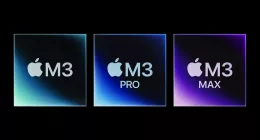Ever since Uber launched its ride-hailing platform, the company has been facing scrutiny either from local government authorities or other taxi outfits of the cities it operates in. It has recently also faced the anguish of users over the change in its data collection policies. But Uber is now looking to provide everyone access to location data — that a ride-hailing company might initially hitch at making public.
Through its newly released ‘Movement’ website, the company aims to provide city planners and researchers data it collects, to help them better understand the flow of traffic in their respective cities. This will, in return, enable them to invest in futuristic technologies and adapt their existing infrastructure to the ever-changing needs of urban mobility. It’ll provide them with traffic data collected through the billions of riders and drivers who’re now connected to the platform and have completed hundreds of thousands of rides (nearly 2 billion) until date.
Talking about the ideology, the official Uber Movement website reads:
We’ve gotten consistent feedback from cities we partner with that access to our aggregated data will inform decisions about how to invest in future solutions to make our cities more efficient. We hope Uber Movement can play a role in helping cities grow in a way that works for everyone.
Now, there are two prominent questions that arise with the release of this traffic data. Firstly, what all info does this tool provide access to? and secondly, is my privacy being compromised in the process? To better understand the two, let’s dive deeper and take a closer look at the service (not available to us yet but we’ve applied for it).
Uber, as we all know is the leading $63 billion ride-hailing giant that reigns half of the world when it comes to mobility. And the company is making this happen with the monstrous amounts of traffic data they’ve been collecting from people like us. But it decided to collect this data and present it to everybody – currently available only to select planning agencies and researchers – in the form of a free-to-use online tool. It enables them to track average car travel times for a certain period of time in a day or a week.
Talking about the same, Andrew Salzberg, Uber’s chief of transportation policy, says,
We don’t manage streets. We don’t plan infrastructure. So why have this stuff bottled up when it can provide immense value to the cities we’re working in?
This urban mobility data tool will enable city planners to gain historical insights — going back until the early 2016s, thus, making it possible for them to gain insights into road improvements and transit behaviors. They can also adjust time zones, days of a week and times to better conduct a complex analysis on transportation pattern in their cities.
As for the privacy concerns, Uber has addressed the same in their FAQs section on the website. The ride-hailing giant mentions that all the data which has been fed into this analysis tool is anonymized. It has been aggregated in a way to ensure that
The said tool has been developed by a team of ten engineers who’ve been working on the product for the past nine months. Uber Movement is currently offering access to data from Manila, Sydney, and Washington DC but it plans to add more cities in the coming months before it goes live for the general public.
Speaking about being an early adopter, Michael Comninos, Executive Director, Greater Sydney Commission, says,
The travel time data Uber has made available provides a tangible and unique measure of how our cities move at different times of the day, and gives us insights into how the road network is performing.
Uber’s new public travel time tool, Movement, will be accessible through our Greater Sydney Dashboard and will play a valuable role in helping city, infrastructure and transport planners better understand how Sydney’s moves at any one time of the day.






